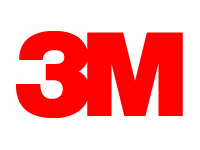#6: Restore and improve urban infrastructure
All text taken from "Grand Engineering Challenges of the 21st Century", National Academy of Engineering
In 2005, the American Society of Civil Engineers issued a report card, grading various categories of U.S. infrastructure. The average grade was D (Updated to D+ in 2013).
What is infrastructure?
Infrastructure is the combination of fundamental systems that support a community, region, or country. It includes everything from water and sewer systems to road and rail networks to the national power and natural gas grids. Perhaps there will be a hydrogen grid in the future as well.
What is the current state of our infrastructure?
It is no secret that America’s infrastructure, along with those of many other countries, is aging and failing, and that funding has been insufficient to repair and replace it. Engineers of the 21st century face the formidable challenge of modernizing the fundamental structures that support civilization.
The problem is particularly acute in urban areas, where growing populations stress society’s support systems, and natural disasters, accidents, and terrorist attacks threaten infrastructure safety and security. And urban infrastructure is not just a U.S. issue; special challenges are posed by the problems of megacities, with populations exceeding 10 million, which are found mostly in Asia. In many parts of the world, basic infrastructure needs are still problematic, and engineers will be challenged to economically provide such services more broadly.
Furthermore, solutions to these problems must be designed for sustainability, giving proper attention to environmental and energy-use considerations (though cities take up just a small percentage of the Earth’s surface, they disproportionately exhaust resources and generate pollution), along with concern for the aesthetic elements that contribute to the quality of life.
What is involved in maintaining infrastructure?
Of course, maintaining infrastructure is not a new problem. For thousands of years, engineers have had to design systems for providing clean water and disposing of sewage. In recent centuries, systems for transmitting information and providing energy have expanded and complicated the infrastructure network, beginning with telegraph and telephone lines and now encompassing all sorts of telecommunications systems. Cable TV, cell phones, and Internet access all depend on elaborate infrastructure installations. Development of remote wind and solar energy resources will add more.
Much of the existing infrastructure is buried, posing several problems for maintaining and upgrading it. For one thing, in many cases, records of the locations of all the underground pipes and cables are unavailable or incomplete. One major challenge will be to devise methods for mapping and labeling buried infrastructure, both to assist in improving it and to help avoid damaging it.
A project of this sort is now underway in the United Kingdom, with the aim of developing ways to locate buried pipes using electromagnetic signals from above the ground. The idea is to find metallic structures capable of reflecting electromagnetic waves through soil, much as a reflector makes a bicycle easier to see at night.
How can you improve transportation systems?
Other major infrastructure issues involve transportation. Streets and highways will remain critical transportation conduits, so their maintenance and improvement will remain an important challenge. But the greater challenge will be engineering integrated transportation systems, making individual vehicle travel, mass transit, bicycling, and walking all as easy and efficient as possible. An increasingly important question is the need to provide better access to transportation for the elderly and disabled.
Cities around the world have begun developing integrated approaches, by establishing transportation hubs, for instance, where various transportation elements — rail, bus, taxi, walking and bicycle paths, parking lots — all conveniently meet. In Hong Kong, several transportation services are linked in a system that allows a single smart card to be used to pay for all the services, including gas and parking.
A similar integrated approach combining energy, water, and wastes (liquid and solid) into “neighborhood” systems could be considered in certain urban areas. This approach would increase sustainability while relieving pressure to meet all citizens’ needs through city-scaled infrastructures. It would be best to introduce such systems in new development areas (e.g. urban revitalization areas) and new cities, which will spring up over the next few decades in places like China and India.
While such services can help support growing urban populations, they must be accompanied by affordable and pleasant places for people to live. Engineers must be engaged in the architectural issues involved in providing environmentally friendly, energy-efficient buildings both for housing and for business.
How do you build better infrastructure?
Novel construction materials may help address some of these challenges. But dramatic progress may be possible only by developing entirely new construction methods. Most of the basic methods of manual construction have been around for centuries — even millennia. Advances in computer science and robotics should make more automation possible in construction, for instance, greatly speeding up construction times and lowering costs. Electricity networks linking large central-station and decentralized power sources will also benefit from greater embedded computation.
All of these endeavors must be undertaken with clear vision for the aesthetic values that go beyond mere function and contribute to the joy of living. Major bridges, for instance, have long been regarded almost as much works of art as aids to transport. Bridges, buildings, and even freeways contribute to the aesthetical appeal of a city, and care in their design can contribute to a more enjoyable urban environment.
In previous decades, much of the rest of urban infrastructure has been erected without as much concern for its impact on a city’s appearance and cultural milieu. Recently, though, awareness of the aesthetics of engineering has begun to influence infrastructure design more generally. Integrating infrastructure needs with the desire for urban green spaces is one example.
Projects to deal with urban storm water runoff have demonstrated opportunities to incorporate aesthetically pleasing projects. Using landscape design to help manage the flow of runoff water, sometimes referred to as “green infrastructure,” can add to a city’s appeal in addition to helping remove pollution. The vast paved area of a city needs to be rethought, perhaps by designing pavements that reduce overhead temperatures and that are permeable to allow rainwater to reach the ground table beneath. Proper engineering approaches can achieve multiple goals, such as better storm drainage and cleaner water, while also enhancing the appearance of the landscape, improving the habitat for wildlife, and offering recreational spaces for people.
Rebuilding and enhancing urban infrastructure faces problems beyond the search for engineering solutions. Various policies and political barriers must be addressed and overcome. Funding for infrastructure projects has been hopelessly inadequate in many areas, as the American Society of Civil Engineers’ “report card” documented. And the practice of letting infrastructure wear out before replacing it, rather than incorporating technological improvements during its lifetime, only exacerbates the problems.
And so, a major grand challenge for infrastructure engineering will be not only to devise new approaches and methods, but to communicate their value and worthiness to society at large.
References
American Society of Civil Engineers. 2005. Report Card for America’s Infrastructure. http://ascelibrary.org/doi/book/10.1061/9780784478851
American Society of Civil Engineers. 2013. Report Card for America’s Infrastructure. http://www.infrastructurereportcard.org/
Bill Wenk. 2007. Green Infrastructure BMPs for Treating Urban Storm Runoff: Multiple-Benefit Approaches,” Water World (July 2007). ww.pennnet.com/display_article/297781/ 41/ARTCL/none/none/Green-Infrastructure-BMPs-for-Treating-Urban-Storm-Runoff:-Multiple-Benefit-Approaches
Zielinski, S. 2006. New Mobility: The Next Generation of Sustainable Urban Transportation,” The Bridge 36 (Winter 2006), pp. 33-38.




